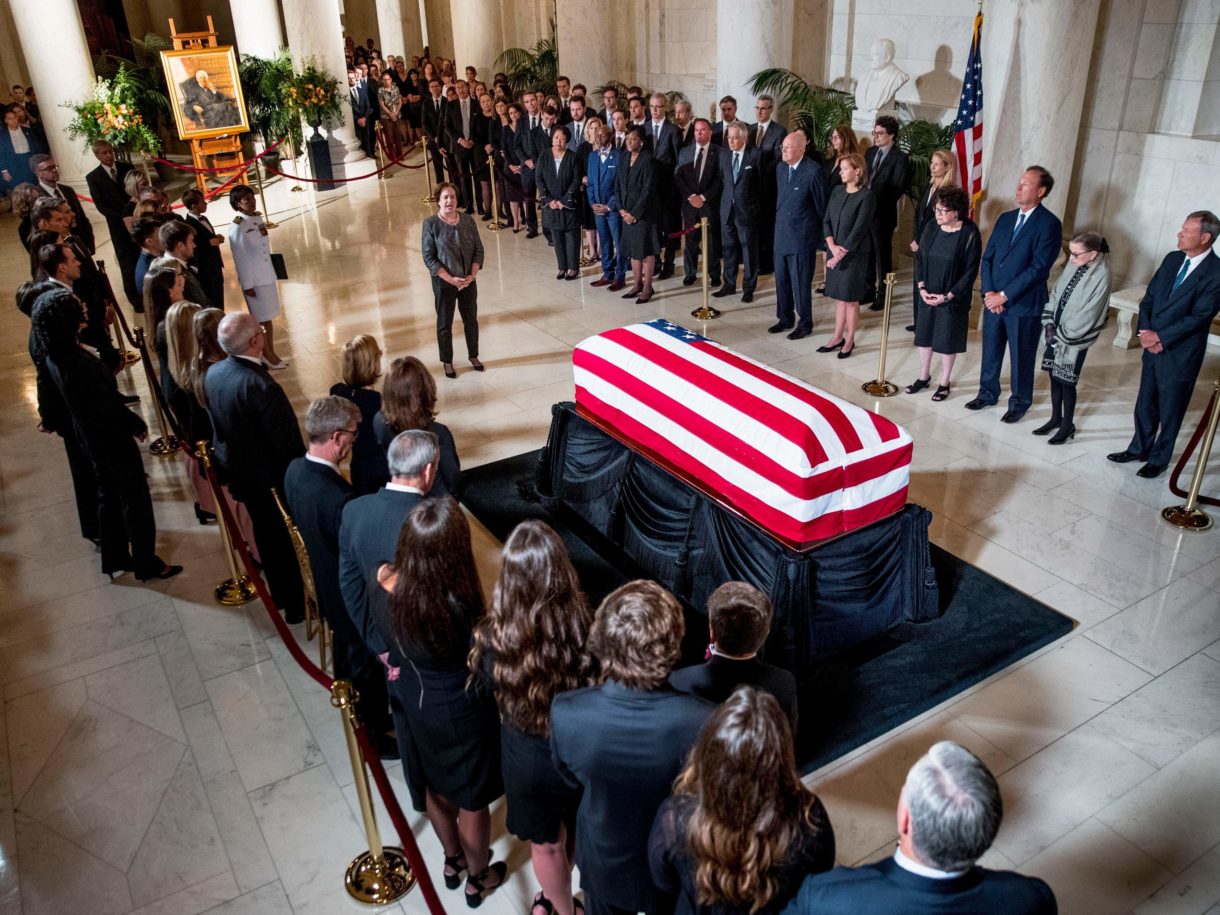Updated at 4:55 p.m. ET
Former Supreme Court Justice John Paul Stevens is lying in repose in the Great Hall of the Supreme Court on Monday. The flag-draped casket was brought into the court as more than 100 of his former law clerks lined the marble steps of the building.
The ceremony was as simple as simple can be.
Justice Stevens, always a modest man, wanted no grand memorial service. So the understated event was televised on C-SPAN, but only the court, Stevens’ former law clerks, his family, and the court press corps were invited to attend.
There were just two speakers at the event: Navy chaplain Judy Malana, who spoke of Stevens’ World War II service, service for which he won the Bronze star; and Justice Elena Kagan.
Kagan was chosen to speak for the court because she was appointed to succeed Stevens in 2010. “He built up a body of work that demonstrates an extraordinary judicial wisdom, unsurpassed by any modern Justice,” she said.
Also in attendance were Chief Justice John Roberts; Justices Ruth Bader Ginsburg, Samuel Alito, Sonia Sotomayor; and retired Justice Anthony Kennedy. President Trump and first lady Melania Trump visited later in the morning, just moments after Trump tweeted a new attack on the four congresswomen he has invited to leave the country in recent days.
Not in attendance were Justices Brett Kavanaugh and Neil Gorsuch, who were abroad teaching, though Mrs. Kavanaugh stood in for her husband; Justice Clarence Thomas was on travel; and Justice Stephen Breyer was having long-scheduled cataract surgery in Boston.
Stevens died July 16 at a hospital in Fort Lauderdale, Fla., following a stroke.
Stevens was named to the court by President Gerald Ford in 1975. In announcing Stevens’ death, Chief Justice John Roberts called him “a son of the Midwest heartland and a veteran of World War II” who “brought to our bench an inimitable blend of kindness, humility, wisdom, and independence.”
Stevens wrote some 400 majority opinions during his long court career and was seen as one of its leading liberals, though Stevens disagreed with that categorization, arguing that he was a conservative but that the court had moved further and further to the right during his tenure.
Stevens’ body will remain at the court he served for 35 years through the day for public viewing. He will be buried Tuesday at a private service at Arlington National Cemetery.
9(MDEwNzczMDA2MDEzNTg3ODA1MTAzZjYxNg004))
